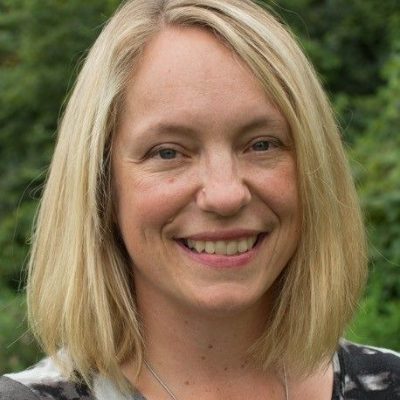
Jo Latimore, Aquatic Ecologist and Outreach Specialist, Department of Fisheries and Wildlife

Jo Lattimore, Ph.D.
Throughout Jo Latimore’s nearly 16 years at MSU, outreach has always been a focus. Whether she’s working with MSU Extension or community partners, she believes in bringing groups together is key to her lake and stream conservation work. That’s why she spends most of her time on the road, working with groups all over Michigan and beyond.
Here's how she answered a few questions from the MSU Water Alliance
What interested you in this particular hub?
It definitely seemed like the best fit for the work I do. Sustainability is at the core of much of the conservation efforts I’m involved with. In addition to invasive species and developing outreach campaigns around that, I am also very involved in citizen science. We have a state grant to run the state’s volunteer lake and stream monitoring program, called the Michigan Clean Water Corps. This hub’s focus on aquatic ecology and ecosystems, and how people interact with them, was the best fit for me.
How do we ensure the Water Alliance doesn’t just talk about problems, but does something about them?
I’m really excited that the Water Alliance is intentionally engaging with the Extension. I think that’s one of the best ways to make sure things are getting done. Our Extension colleagues are always working with stakeholders, partners, and local governments. They’re focused on taking the knowledge that we’re generating here at MSU to the people who need it on the ground. MSU’s previous water initiatives have been more research-focused. I think the broader focus on outreach, teaching and research increases the promise of this Alliance moving things forward.
What problems/issues do you envision the hub taking on?
So many of our water sustainability questions incorporate not only biology and chemistry but also social science, human behavior, and understanding why people do the things they do. With the example of invasive species, we want people to clean their boats before trailering them from one lake to another, so that they don’t transfer invasive species to another body of water. We can ask people to do that and put up signs, but we need to better understand what would motivate people to actually do it. Our hub could take a wholistic approach to invasive species, looking at the impacts of the species, how they’re moved from one place to another, how we can clean gear more effectively, and how we can get a message out to the public in a way that relates to their values and keeps them interested. There’s no one field that can answer a question like that, as simple as it sounds.
How do you think an interdisciplinary group is better equipped to approach these challenges than taking a siloed approach?
There can be all sorts of great work happening, but if we’re not talking to each other, we won’t have those “aha” moments. For example, a biologist might study how zebra mussels got into a lake and their impact on native mussels and water quality. But if that’s where it stops, that doesn’t help a boater to understand that maybe they ought to run their boat through a carwash before they head to a lake up north after they’ve been in Southern Michigan or somewhere out of state. When we work in silos, it’s pretty well recognized that it doesn’t necessarily lead to results on the ground because we’re isolated from each other. The Alliance is already providing opportunities to get people together, whether in person or virtually, to talk about shared interests. Sometimes we don’t know what everyone else is doing apart from our own work unless we have an opportunity to talk about it. At a big university like MSU, that can be almost impossible unless we have initiatives like this that will encourage people with a shared interest from different disciplines to come together.
Why do you think MSU is uniquely positioned to create solutions?
I think we have a number of advantages. We’re big enough that we have diverse expertise in Extension, research, teaching, and lots of different fields. We have all thse people at the same institution, doing work that applies to different pieces of the same puzzle. Being the state’s land grant university with an Extension program is huge. There’s this expectation that MSU is there to help the state, its residents, and our decision-makers have the best possible information. We already have that reputation, and we can build on that so that people continue to turn to MSU for answers. An alliance like this will make us even better positioned to address water-related questions and concerns.
What are some of your ideas for potential hub projects?
We’re just starting to think about that. It’s a little premature to identify them because we’re just getting off the ground, but I’m excited about the potential.
One year from now, what do you hope your hub has accomplished?
I hope anyone who’s participated with the hub will be able to directly identify a valuable connection they have made with someone else at MSU who they didn’t know before. I hope they connect with people and work on a proposal or a project together. I know things take time, and I’m not expecting in a year to have everything accomplished. But I want people who’ve participated to be able to look back and say that the hub was useful to them, and that they learned something that benefitted them or their students.